Book NOW for $1 £1 €1 • Flexible Payments • No Change Fees • Private Departures Available
- Home >>
- Nepal Travel Advice
- Main Airport in Nepal
- Geography and Landscape in Nepal
- Culture, Religion & Etiquette
- Photography
- Languages Spoken
- Capital City
- Vaccinations & Travel Health
- Is it safe to drink tap water in Nepal
- Emergency Calls
- Travelling as a Single Woman
- Wifi & Interenet Access
- Timezone
- Emergency Calls
- Getting Around Nepal
- History
Getting to
Nepal
The breathtaking scenery of the Himalayas alone is enough to make anyone want to travel to Nepal. Sharing its borders with China and India, Nepal is home to the 8 of the 10 highest peaks on earth. Due to its remote location you will struggle to find direct flights to the capital Kathmandu. You can find rough flight times below which include the stopover.
- London to Kathmandu is about a 13 hour flight
- Los Angeles to Kathmandu takes around 13 hours
- Cape Town to Kathmandu takes around 22 hours
- Sydney to Kathmandu is about a 16 hour flight
- New York to Kathmandu takes around 20 hours
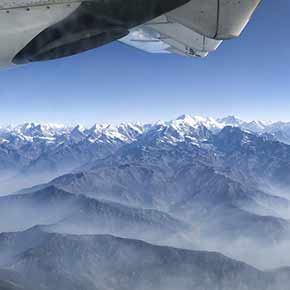
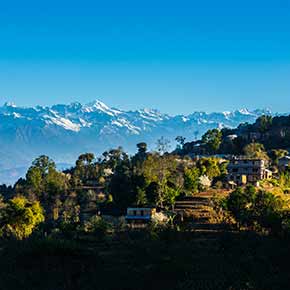
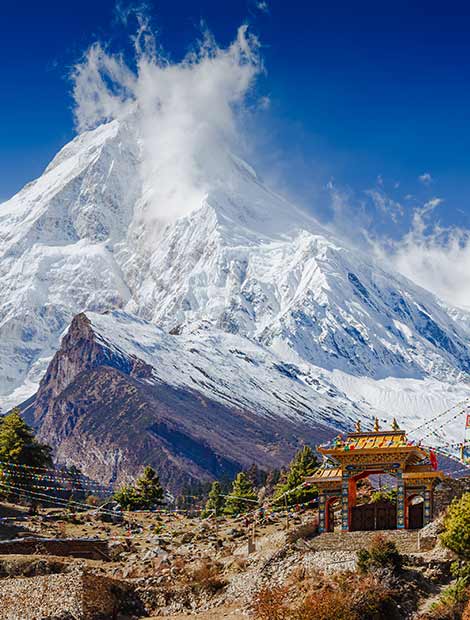
Main airport for
Nepal
The main gateway to Nepal for international arrivals is Tribhuvan International Airport (KTM). Other airports such as
Pokhara Airport (PKR) is Lukla Tenzing Hillary Airport (LUA) are usually used for domestic flights and connection to the international airport in Kathmandu.
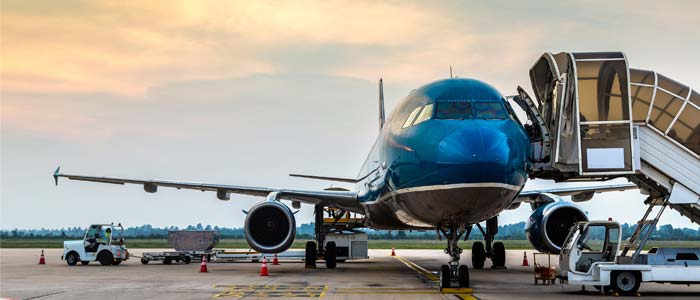
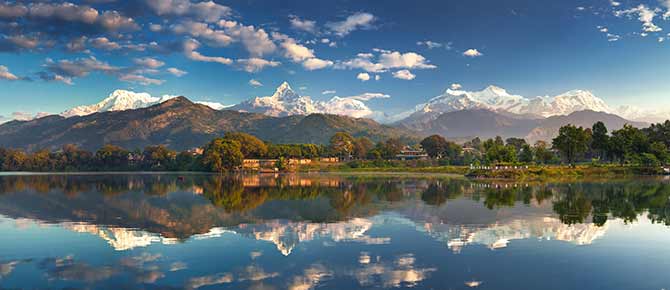
Geography and landscape
of Nepal
From the highest peaks on earth to dense jungles and exotic wildlife to picturesque rice terraces, Nepal has a lot in store for nature lovers. Urban areas reward visitors with bustling streets filled with ancient architecture and dazzling religious sites, delicious food and rich culture. No matter what experience you’re after, Nepal will not disappoint.
Culture, Religion
and Etiquette
The Gautama Buddha is said to be born in Lumbini, a small town in Nepal. Therefore it’s not surprising that Nepal is largely associated with majestic religious temples and sites. Nowadays Nepal is a very diverse country when it comes to religion and over 81% of the population are Hindus, followed by Buddhists with 9% and Muslims with 4.4%. 3% of the country’s population are Kirati and 1.4% Christian.
Family life in Nepal can be rather chaotic. Households usually consist of several generations. Society in Nepal highly values its eldest members and they are expected to be treated with great respect. Couples in Nepal can “marry for love” but arranged marriages are also common. No matter which of the two, both families have to agree to the union before couples can marry. Once married, females in Nepal usually move into the husband's home. Men are often still expected to be “the head of the family” and earn the money while the woman stays at home to run the household and look after children. However, as Nepal is progressing and developing as many countries in the area are, it’s becoming more common for married couples to move into their own homes.
Appearance is very important in Nepal. This includes cleanliness, grooming and clothes. Like many countries in Asia, Nepal is quite conservative when it comes to clothes. Especially in less tourist heavy areas men are expected to at least wear a T-Shirt and long trousers, while women should make sure to cover their shoulders and wear a skirt or trousers below the knees. Grooming is considered one of the essentials to a clean appearance and men may be treated with less respect in more rural areas if they do not shave.
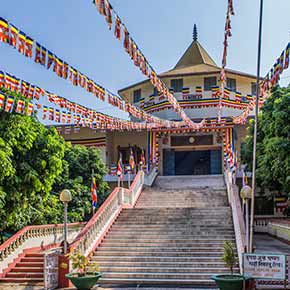
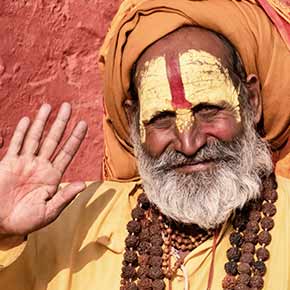
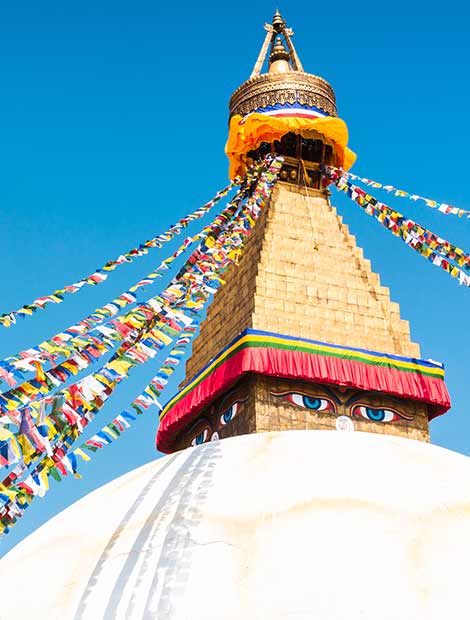
Top Tip
Religion is an important part of everyday life in Nepal. When visiting religious sites make sure you behave respectfully. Take off your shoes before entering Hindu temples and Buddhist sites are usually walked in a clockwise direction.
Photography
Nepal has a lot to offer, your camera is likely going to fill up quickly with dazzling Himalayan views, ancient architecture, rare wildlife and lush jungles scenes. Nepal is a paradise for photography lovers. However, it’s important to be mindful of local laws and customs. When taking pictures of individuals always make sure you get their permission. In some places, especially religious sites, it’s often forbidden to take pictures, in other places you might be expected to pay a fee to take a picture or to bring your camera (even if you don’t want to take any pictures), in other areas you can snap away freely. Always keep an eye out for signage indicating whether photography is allowed and/or free of charge. If unsure it’s always best to ask a local or your tour leader.
Languages Spoken
Nepal has a large number of indigenious communities and therefore it isn’t surprising that as many as 129 languages are spoken in Nepal. The official language is Nepali which is estimated to be spoken by 44.6%, followed by Maihili which is spoken by roughly 11.6% of the population. The 15 most spoken languages in Nepal account for 93.97% of the country.
- Nepali - spoken by 44.6%
- Maithili - spoken by 11.67%
- Bhojpuri - spoken by 5.98%
- Tharu - spoken by 5.77%
- Tamang - spoken by 5.11%
- Nepal Bhasa - spoken by 3.2%
- Bajjika - spoken by 2.99%
- Magar - Spoken by 2.98%
- Dotyali - Spoken by 2.97%
- Urdu - Spoken by 2.61%
- Awadhi - Spoken by 1.89%
- Limbu - Spoken by 1.3%
- Gurung - Spoken by 1.23%
- Baitadeli - Spoken by 1.03%
- Rai - Spoken by 0.6%
Capital City
Nepal has a population of 28 million and just over one million of those live in the country’s capital Kathmandu. The Tribhuvan International Airport is only 6km from the main tourist district Thamel where the majority of hotels are located. The majority of tours depart from Kathmandu and it’s a great first stop for travellers who want to get to know the culture and people of Nepal before exploring the remote and more tranquil spots this country has to offer. From the historic maze of streets and alleyways of the old city, to delicious food, to breathtaking religious sites, it is worth adding a couple of days in Kathmandu to your trip before continuing your journey.
Visas
First of all, almost all nationalities require a Visa to enter Nepal. Tourist visas for nationals from the UK, EU, USA, Canada, Australia and New Zealand can usually be obtained from their closest Nepalese embassy.
Almost all visitors from the UK, EU, USA, Canada, Australia and New Zealand whose first port of entry to Nepal is the Tribhuvan International Airport in Kathmandu can apply for a visa on arrival. A single-entry visa on arrival can be issued for 15/30/90 days and costs US$25/40/100. If you qualify for this option and plan on getting a visa on arrival at Tribhuvan International Airport, make sure you bring two passport-style photos for your visa.
Please note: This advice is based on regulations upon writing this for the above mentioned nationalities only. Laws around entry requirements and visas can change quickly. Please make sure you have the correct visa for your nationality, circumstances and travel route before you travel.
Vaccinations and Travel Health/Medicines in Nepal
The CDC recommends for routine vaccines to be up to date when visiting Nepal. Routine vaccines include Measles-Mumps-Rubella (MMR) vaccine, Varicella (chickenpox) vaccine, Polio vaccine, Diphtheria-Tetanus-Pertussis vaccine, Influenza and the annual flu vaccine.
Additional vaccines that are recommended for travellers visiting Nepal include Hepatitis A and Typhoid.
Depending on the nature of your trip and your medical background you might also want to consider getting vaccinated for Hepatitis B, Cholera, Japanese Encephalitis and Rabies. A Yellow Fever vaccine is usually only required if you have transited through or visited a country with a risk of Yellow Fever.
According to FitForTravel, risk of Malaria in Nepal is “low to no risk”. That means most young and healthy travellers visiting well-travelled areas will not require Malaria tablets. However, it is sensible to prevent mosquito bites when possible by applying mosquito repellent and wearing long clothes. Make sure you check with your doctor if you’re susceptible to Malaria and should take the tablets as a precautionary measure well ahead of travelling.
Please note that these recommendations are based on guidelines from the CDC. Always consult with your GP, doctor or travel nurse before travelling to ensure you have the right vaccinations and medication that are tailored to the nature of your trip and any potential underlying health conditions.
Is it safe to drink tap water in Nepal?
The quick answer is, no, it is not safe to drink tap water in Nepal. We recommend bottled mineral water which can be bought cheaply in Nepal. It’s best to avoid ice cubes in drinks and raw food washed with tap water, such as vegetables. Some upper class restaurants might use filtered tap water but never assume and always ask.
Electricity and Plugs in Nepal
The plugs and sockets in Nepal are type C, D and M. The standard voltage is 230V with a frequency of 50Hz. The type C fits a 2 round prong plug, and both types D and M fit a 3 round prong plug.
Emergency calls
It is always a good idea to have a few important numbers saved on your phone in case of emergencies. The most important ones in India are:
- 100 is the number for the police service
- 102 is the number for the ambulance service
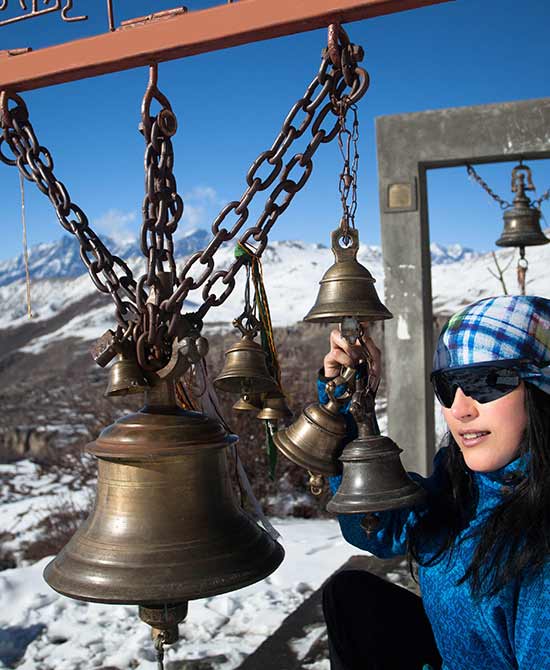
Travelling as a single woman in Nepal
It’s easy to be discouraged from travelling solo as a woman in the 21st century. Having access to media 24/7 from all around the world, we are reading about ‘horror’ stories that paint a picture in our heads of destinations we have never even visited. Oftentimes these are isolated incidents and it’s important to remember that every country in the world has crime and horrible incidents, no matter how developed it may be. Nepal as a whole is safe for female travellers and the vast majority of solo female travellers who practice common sense have a very positive experience. We have summarised some tips that help you stay safe on your visit to Nepal:
- Dress appropriately Wearing revealing clothing such as, short shorts, short skirts, crop tops or tops showing your shoulders may suggest your are sexually available and is likely to attract attention. Nepal is very conservative when it comes to clothing and covering up your shoulders and knees is therefore not only a sensible choice but also considered respectful.
- Don’t stay out alone after dark As in any city in the world, you shouldn’t wander the streets alone at night, especially in less busy areas.
- Avoid bars You’ll find that bars are usually tourist traps and charge you a lot more than other restaurants and cafes, simply because you’re a tourist. Although Nepal is a very safe country, these are the places where you’re likely to have theft after a tourist has been reckless with their possessions. It’s best to avoid bars and stick to restaurants and cafes.
- Speak up If something is making you feel uncomfortable, speak up - politely. If it persists, calmly move on.
- Be connected Bring a phone that works internationally and install a local SIM card. Have emergency numbers saved on your phone in case of emergencies and keep in touch with people who know your itinerary.
- Don’t take offence Let’s face it, as a foreign tourist you’re likely to attract attention. You might find children, women and men staring at you and often it’s simply because they’re curious and not because you’re a woman. It’s important to keep in mind that staring isn’t considered rude in Nepal. If you do think something isn’t right, ask them to stop, walk away, ask people to help you or make a scene to attract attention.
Wifi and internet access
WiFi is widely available in most hotels, restaurants and cafes in Kathmandu and Pokhara and usually free of charge. If you’re visiting smaller towns and remote areas WiFi is often available but you can expect slower speed and occasional hiccups here. Generally speaking, in the bigger cities you will usually have a fairly reliable internet connection.
Time Zone
Kathmandu, Nepal
Nepal (NPT) is 6 hours ahead of London (GMT), 13 hours ahead of Los Angeles, and 10 hours ahead of New York. Nepal runs on Nepal Time and does not switch to daylight saving time. To calculate the time difference from your current location, visit timeanddate.com.
Getting around Nepal
From the classic rickshaws and taxis in urban areas to buses and flights for domestic travel, there are several ways to travel in Nepal. We have summarised the main modes of transport travellers usually consider taking in Nepal.
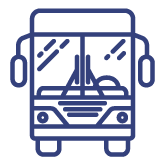
Bus
There are local mini-buses and vans that you can use in the city and inner city. Although they are very cheap - you can get a ticket for as little as US$5 to travel from Kathmandu to Pokhara - they are usually overcrowded, used by commuters and stop very frequently extending the travel time by sometimes several hours and overall, just aren’t very comfortable. Most major cities are connected by tourist buses which are usually air conditioned and a lot more comfortable - definitely worth the few extra dollars.
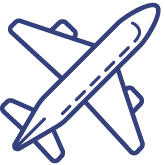
Air
It may come as a surprise but Nepal has quite a few domestic airports. Air travel is definitely pricey and is aimed at tourists. A 25-minute flight from Kathmandu to Pokhara will cost around US$100. Some of the major Nepalese airlines are Nepal Airways, Buddha Air and Yeti Airlines.
Taxi
Naturally, Taxis are the most expensive way of getting around in Nepal. Within the cities it’s probably the easiest and quickest way of getting around if walking isn’t an option. Although you can use taxis to travel inter city, Taxis often have to pay a fee to leave their area which will be added to your overall fare and makes it an expensive way of travelling domestically.

Personal Driver
Naturally, Taxis are the most expensive way of getting around in Nepal. Within the cities it’s probably the easiest and quickest way of getting around if walking isn’t an option. Although you can use taxis to travel inter city, Taxis often have to pay a fee to leave their area which will be added to your overall fare and makes it an expensive way of travelling domestically.
History
It is unknown when exactly the first civilisation inhabited the region that is now known as Nepal. Speculations are dating back Nepal’s history as far as the 30th century BC. The modern history of Nepal began with the settlement of the Indus Valley Civilisation in around 2600BC. The Kirat people, whose religion still made up 3% of the Nepalese population in 2011, are said to have arrived from Tibet about 4,000 years ago. It is said that the Gautama Buddha was born in 623BC in an area which now known as Lumbini.
In 1768 the Kingdom of Nepal was formed and united the country to what it is known as today. The monarchy was abolished in 2008 and Nepal now has a president as head of state.



